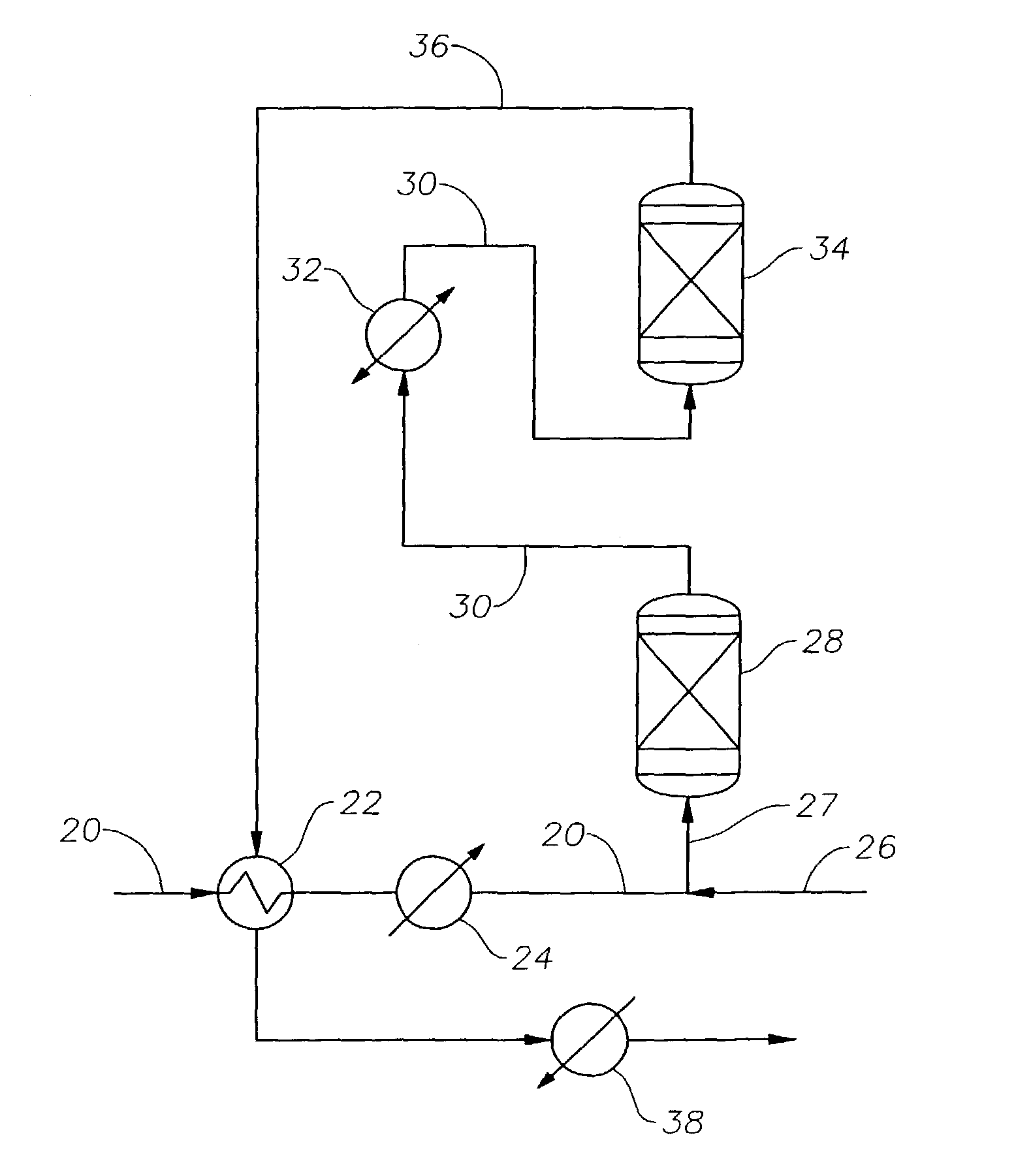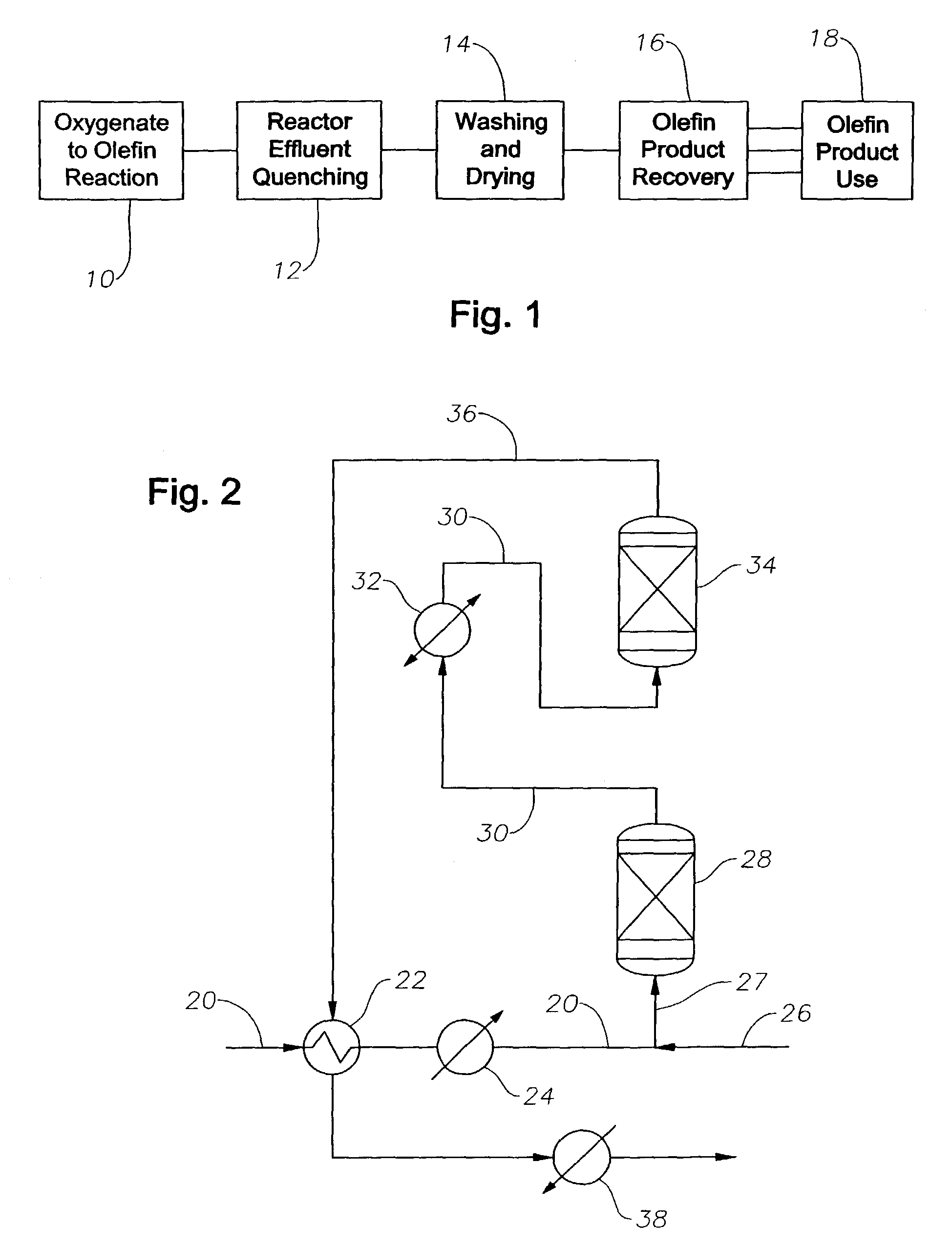Process for removal of alkynes and/or dienes from an olefin stream
a technology of alkynes and dienes, applied in the direction of organic chemistry, chemistry apparatus and processes, hydrocarbons from oxygen organic compounds, etc., can solve the problems of impurities contaminating the olefin product stream, and the competition reaction is not desirabl
- Summary
- Abstract
- Description
- Claims
- Application Information
AI Technical Summary
Benefits of technology
Problems solved by technology
Method used
Image
Examples
Embodiment Construction
Introduction and Overview
[0029]To aid in the understanding of the present invention, a brief overview of the stages of producing and using one or more olefin products from an oxygenate feed stream is discussed with reference to FIG. 1. The oxygenate-to-olefin reaction stage 10 occurs in an oxygenate-to-olefin reactor and converts an oxygenate feed stream into a gaseous output stream comprising one or more olefin(s). The gaseous output stream of an oxygenate-to-olefin reactor is defined as the effluent stream. The reactor effluent stream is particularly the gaseous output stream from the point this stream leaves the reactor to the point the stream enters a quench device.
[0030]Following the oxygenate-to-olefin reaction stage, the reactor effluent stream passes through an effluent quenching stage 12. The effluent quenching stage 12 cools the reactor effluent stream and removes water and catalyst fines from the reactor effluent stream. Included in the effluent quenching stage 12 is opti...
PUM
| Property | Measurement | Unit |
|---|---|---|
| Temperature | aaaaa | aaaaa |
| Temperature | aaaaa | aaaaa |
| Temperature | aaaaa | aaaaa |
Abstract
Description
Claims
Application Information
 Login to View More
Login to View More - R&D
- Intellectual Property
- Life Sciences
- Materials
- Tech Scout
- Unparalleled Data Quality
- Higher Quality Content
- 60% Fewer Hallucinations
Browse by: Latest US Patents, China's latest patents, Technical Efficacy Thesaurus, Application Domain, Technology Topic, Popular Technical Reports.
© 2025 PatSnap. All rights reserved.Legal|Privacy policy|Modern Slavery Act Transparency Statement|Sitemap|About US| Contact US: help@patsnap.com


